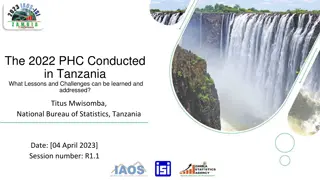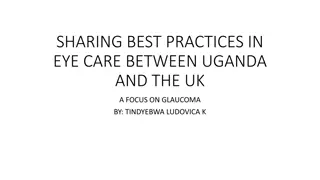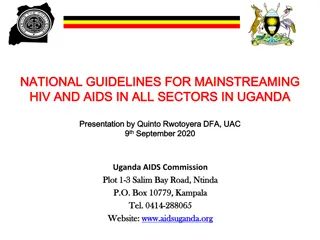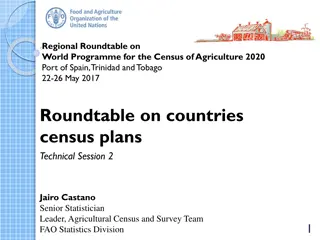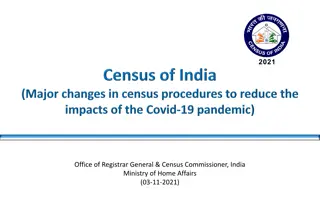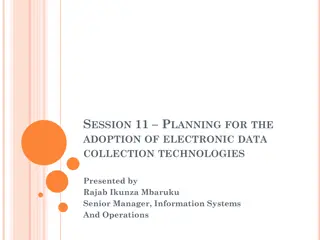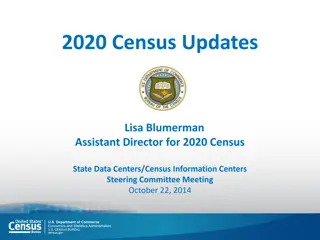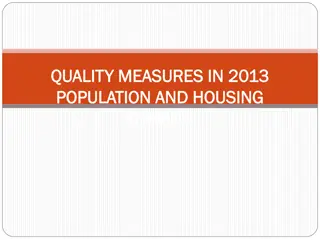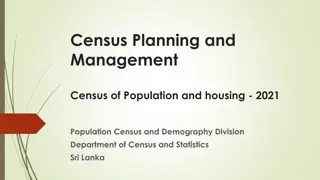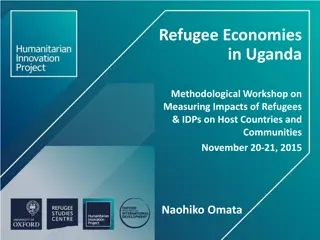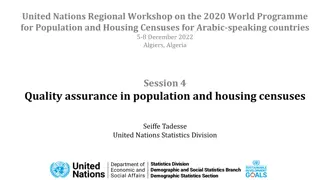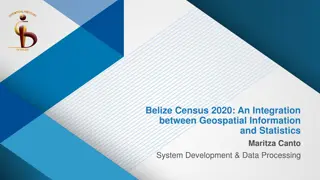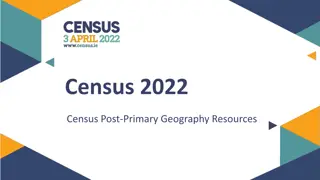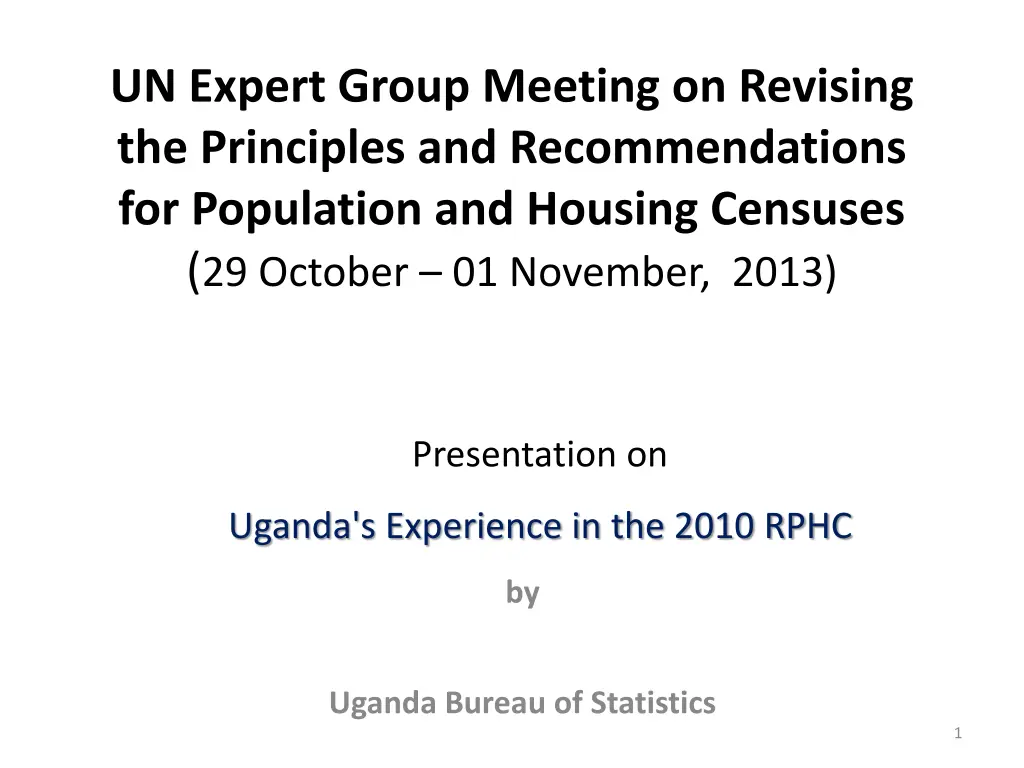
Uganda's 2014 Census: History, Methodology & Core Topics
Explore Uganda's population census history, the 2014 census objectives, methodology, and core topics covered. Discover how the data collected aids in planning, policy-making, and program evaluations within Uganda. Gain insight into the challenges faced during census implementation and the importance of accurate demographic data for socio-economic development.
Download Presentation

Please find below an Image/Link to download the presentation.
The content on the website is provided AS IS for your information and personal use only. It may not be sold, licensed, or shared on other websites without obtaining consent from the author. If you encounter any issues during the download, it is possible that the publisher has removed the file from their server.
You are allowed to download the files provided on this website for personal or commercial use, subject to the condition that they are used lawfully. All files are the property of their respective owners.
The content on the website is provided AS IS for your information and personal use only. It may not be sold, licensed, or shared on other websites without obtaining consent from the author.
E N D
Presentation Transcript
UN Expert Group Meeting on Revising the Principles and Recommendations for Population and Housing Censuses (29 October 01 November, 2013) Presentation on Uganda's Experience in the 2010 RPHC by Uganda Bureau of Statistics 1
Content Uganda's Census Taking History Population topics covered in the Uganda census Emphasis on the topics introduced for the first time in the census; Comparison of the core and non-core population topics as listed in the UN Principles and Recommendations for Population and Housing Censuses; and Specific difficulties in implementing any of the population topics, core and non-core 2
History of Census Taking in Uganda Administrative Counts of 1911, 1921 and 1931. Population Censuses of 1948 and 1959. National Population and Housing Censuses of 1969; 1980; 1991; and 2002. Next National Population and Housing Census 2014
Objective of the 2014 Census To ensure availability of bench-mark demographic and socio-economic data for use in planning, policy formulation and programme evaluation 4
The Census Methodology Census Mapping Analogue and Satellite Imagery Door-to-door enumeration De facto enumeration Enumeration will last up to 10 days Data capture will be by ICR technology Data Analysis NSO National Local Governments - own Analytical Reports 5
The 2014 Census Content Individual Characteristics Demographic and Social Characteristics Migration Parental Survival Education Economic Activity Fertility Childhood Mortality Disability Status Household Characteristics Housing Conditions HH Characteristics HH based Agricultural Activities Deaths in Household Community Characteristics Service Delivery 6
Core Topics NOT Included Individual Place of Birth Place of Residence at a fixed point in time Year of Arrival (for Foreign born Population) Industry (for the main Occupation) Household Water Supply Sewage Disposal Occupancy by more than one Households Number of Occupants 7
New Topics Individual Level Residence Status Birth Registration Status Disability Status using the WG Approach Field of Specialization Ownership of Mobile Phones Use of the Internet 8
New Topics Household Level Ownership of Mosquito nets International Remittances Possession of Bank accounts Causes of Death inc Maternal Deaths Distance to Social Service Facility Source of Livelihood Poverty Correlates 9
Difficulties in Implementing the Topics Urban Areas The dilemma of the gazetted and what actually is Previous Residence misunderstanding arising out of splitting of administrative areas; Respondents report name of place at he time of birth, which is not necessarily current name. Field of Specialisation Classification not easy to comprehend by the calibre of enumerators The calibre of Field Staff used are not competent enough to classify individuals using the ISCED

